This article was co-authored by Michelle Myles. Michelle Myles is the Co-owner of Daredevil Tattoo, a tattoo shop located based in New York City's Lower East Side. Michelle has more than 20 years of tattooing experience. She also operates the Daredevil Tattoo Museum, co-owner Brad Fink's personal collection of antique tattoo memorabilia that he has amassed over the last 27 years of tattooing.
wikiHow marks an article as reader-approved once it receives enough positive feedback. In this case, several readers have written to tell us that this article was helpful to them, earning it our reader-approved status.
This article has been viewed 1,428,475 times.
All tattoos will be slightly uncomfortable in the hours and days following the session, but knowing how to distinguish between regular discomfort and more serious signs of infection can be tricky. Keeping the tattoo clean and dry is the best way to prevent infection. If you're concerned about the tattoo site, you can learn to recognize the signs of infection and treat possible infections in a few basic steps.
Steps
Recognizing the Symptoms of Infection
-
1Wait a few days before coming to any conclusions. The day you get a tattoo, the entire area will be red, slightly swollen, and sensitive. New tattoos will be somewhat painful, about as sore as a severe sunburn. In the first 48 hours of getting a tattoo, it can be very difficult to determine whether or not an infection has set in, so don’t jump the gun. It's critical to maintain a proper tattoo aftercare procedure and adopt a wait and see policy.[1]
- Care for and wash your tattoo as per the artist's instructions and be sure to keep it dry since moist areas breed infection.
- If you're prone to infection, be sure to take good care of your tattoo and take an anti-inflammatory medication, like Ibuprofen, if necessary.
- Pay attention to your pain. If the tattoo is especially painful, and the pain lasts for more than 3 days following the tattoo session, go back to the parlor and ask the artist to examine the tattoo.
-
2Look for heat, redness, and itchiness. Feel with your hand above the area for warmth. If you can feel heat radiating from the area, that's a sign that it might be seriously inflamed. [2] Redness can also be a sign of infection. All tattoos will get slightly red in the area around the lines, but if the redness gets darker as opposed to get lighter, and if it gets more painful instead of less, it's a sign of serious infection.
- Look for red lines radiating out from the tattoo itself. If you see thin red lines radiating out from the tattoo, seek emergency medical care because you may have blood poisoning.
- Itchiness, especially itchiness spreading outward from the area of the tattoo is also a sign of an allergic reaction or infection. Tattoos will itch some, but if it gets especially strong and lasts more than a week after you get the tattoo, you may want to get it checked out.
Advertisement -
3Look for serious swelling and discharge. If the area in or immediately around the tattoo swells up unevenly, that can be a serious sign of infection. Any fluid-filled boils or pustules in the area are definitely signs of infection and should be treated immediately. If the tattoo raises up significantly instead of shrinking down, get it checked out.[3]
- Foul-smelling discharge is also a very serious sign. Go immediately to the emergency room or see your physician.
-
4Take your temperature and pay attention to how you're feeling. Any time you’re concerned about the possibility of infection, it’s a good idea to take your temperature with an accurate thermometer and make sure it’s not high. If you’re feeling feverish, it can be a sign of an infection that needs to be treated sooner rather than later.[4]
- A fever within 48 hours of getting the tattoo, nausea, body aches, and generally feeling unwell are all signs of infection. If you have these symptoms, see your doctor promptly.
Treating Infection
-
1Show the infection to the tattoo artist. If you’re concerned about your tattoo but aren’t sure whether or not it may be infected, the best person to talk to is the artist from whom you received the tattoo. Show them how it’s progressing and ask them to evaluate it.
- If you’re experiencing severe symptoms, like foul-smelling discharge and significant pain, skip this step and go to the doctor or the emergency room immediately to receive treatment.
-
2Go to the doctor. If you've spoken with your tattoo artist and have tried to care for the tattoo as best you can and still are experiencing symptoms of infection, it's important to get to the doctor as soon as possible and get on antibiotics. There's usually not much that can be done topically to the tattoo, but medication can help fight the infection.
- Start taking antibiotics as directed as soon as possible to help your body fight off infection. Most topical infections should be able to be easy to kick quickly, but blood infections are serious business and need to be treated swiftly.
-
3Use a topical ointment as directed. Your doctor may prescribe topical ointment as well as antibiotics to keep your tattoo healing properly. If so, apply the topical ointment regularly and keep the tattoo as clean as possible. Wash it gently with clean water twice a day, or follow your doctor's specific instructions.
- After treating the area, you may need to keep the tattoo covered with sterile gauze, but also let it get enough air to avoid promoting further infection. The tattoo needs fresh air.
-
4Keep the tattoo dry while the infection heals. Wash your tattoo regularly with a very small amount of non-scented soap and clean water, then blot dry it thoroughly before re-bandaging it or keeping it uncovered. Never cover or soak new tattoos that have become infected.
Preventing Infection
-
1Keep your tattoo clean. Always follow the instructions the tattoo artist gives you about caring for your new tattoo and make caring for your new tattoo a priority. Rinse the area gently and wash it thoroughly with antibacterial soap, starting 1 hour after receiving the tattoo. Then, rinse the area again and pat it dry with a new paper towel.
- Tattoo artists will usually provide you with a tube of cream, often Tattoo Goo or Aquaphor, or another topical ointment. Apply the ointment to the tattoo to keep it clean and healing properly for at least 3-5 days after receiving the tattoo. Never use Vaseline or Neosporin on new tattoos.
-
2Let the tattoo get enough air as it heals. In the first couple of days of receiving a new tattoo, it's important to keep it as comfortable as possible, letting it heal naturally. Don't use too much ointment, as the skin needs to be able to breathe.
- Avoid wearing clothing that might irritate the area and keep it out of the sun as much as possible to avoid bleeding the ink.
-
3Get tested for allergies before receiving a tattoo. While it's uncommon, some people are allergic to certain ingredients in tattoo ink, which can create an ugly and painful situation if you get a tattoo. It's best to get an allergy test performed if you're interested in getting a tattoo.
- Usually, black ink doesn't contain anything that people are allergic to, but often colored inks will have other additives that can cause reactions in some people. If you just want to get a tattoo with India ink, you're probably fine, even if you have sensitivities.
- You can also request the artist use vegan ink made with natural ingredients if you have sensitive skin.
-
4Get tattoos from licensed tattoo artists only. If you're going to get a tattoo, spend some time researching good parlors and artists in your area, and make sure the artist you choose to tattoo your body has a license and that the parlor has a good track record of cleanliness and customer satisfaction.
- Avoid stick 'n pokes and other home tattooing options. Even if your friend is "really really good" at giving tattoos, make an appointment with someone who gives tattoos professionally to get yours done.
- If you make an appointment and show up to find any suspicious behavior or unclean environments, cancel your appointment and walk out. Find a better tattoo parlor.
-
5Make sure your tattoo artist uses new or disposable needles. Good tattoo artists make cleanliness a priority and will take steps to show you clearly that they're opening new needles and putting on gloves. If you don't see this happening, ask. Good tattoo parlors should make this obvious and should respect your concern for your own safety.
- Disposable needles and instruments are best. If the shop reuses instruments, even if they've been sterilized, you have a higher risk of infection.
Expert Q&A
Did you know you can get expert answers for this article?
Unlock expert answers by supporting wikiHow
-
QuestionHow do I know if my tattoo is healing properly?
 Michelle MylesMichelle Myles is the Co-owner of Daredevil Tattoo, a tattoo shop located based in New York City's Lower East Side. Michelle has more than 20 years of tattooing experience. She also operates the Daredevil Tattoo Museum, co-owner Brad Fink's personal collection of antique tattoo memorabilia that he has amassed over the last 27 years of tattooing.
Michelle MylesMichelle Myles is the Co-owner of Daredevil Tattoo, a tattoo shop located based in New York City's Lower East Side. Michelle has more than 20 years of tattooing experience. She also operates the Daredevil Tattoo Museum, co-owner Brad Fink's personal collection of antique tattoo memorabilia that he has amassed over the last 27 years of tattooing.
Tattoo Artist & Co-owner, Daredevil Tattoo Tattoo artists often know more about tattoo care than medical professionals. Sometimes the normal healing process, which can include bloody or inky discharge around the tattoo, looks like the beginning of an infection. This is especially true for large or colored tattoos. The artist is often the best person to evaluate any issues you have, so try contacting the studio and scheduling a visit if you have questions.
Tattoo artists often know more about tattoo care than medical professionals. Sometimes the normal healing process, which can include bloody or inky discharge around the tattoo, looks like the beginning of an infection. This is especially true for large or colored tattoos. The artist is often the best person to evaluate any issues you have, so try contacting the studio and scheduling a visit if you have questions. -
QuestionWhat's best for tattoo aftercare?
 Michelle MylesMichelle Myles is the Co-owner of Daredevil Tattoo, a tattoo shop located based in New York City's Lower East Side. Michelle has more than 20 years of tattooing experience. She also operates the Daredevil Tattoo Museum, co-owner Brad Fink's personal collection of antique tattoo memorabilia that he has amassed over the last 27 years of tattooing.
Michelle MylesMichelle Myles is the Co-owner of Daredevil Tattoo, a tattoo shop located based in New York City's Lower East Side. Michelle has more than 20 years of tattooing experience. She also operates the Daredevil Tattoo Museum, co-owner Brad Fink's personal collection of antique tattoo memorabilia that he has amassed over the last 27 years of tattooing.
Tattoo Artist & Co-owner, Daredevil Tattoo
-
QuestionHow long should I leave the cling film on my new tattoo? Wouldn't the skin underneath be sweating, thus causing bacteria to breed?
 Kiara HamedKiara Hamed is a Tattoo Artist based in Dallas, Texas. She has over nine years of tattoo designing experience. She received her Tattoo Artist Certification in 2010 and a BS in Computer Information Systems from Clark University Atlanta in 2013.
Kiara HamedKiara Hamed is a Tattoo Artist based in Dallas, Texas. She has over nine years of tattoo designing experience. She received her Tattoo Artist Certification in 2010 and a BS in Computer Information Systems from Clark University Atlanta in 2013.
Tattoo Artist
Warnings
- If you develop 1 or more signs of infection after getting a tattoo, seek medical attention immediately.⧼thumbs_response⧽
References
About This Article
To tell if your tattoo is infected, notice if it becomes a darker shade of red, which could be a sign of serious infection. Similarly, your tattoo will naturally be itchy, but if the sensation gets stronger over time or it lasts over a week, your tattoo might be infected. You should also bear in mind that your tattoo will be very sensitive and slightly swollen for the first 48 hours, so you should wait until at least the third day before coming to any conclusions. However, if you notice significant swelling or any fluid-filled boils or pustules at any time, you should seek help immediately. If you think your tattoo may be infected, you should visit your tattooist first, and then see a doctor if your symptoms persist. For more tips, including how to treat an infected tattoo, read on!


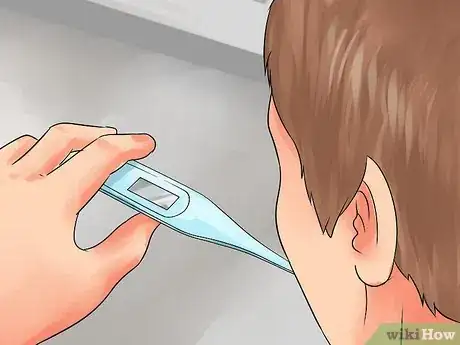
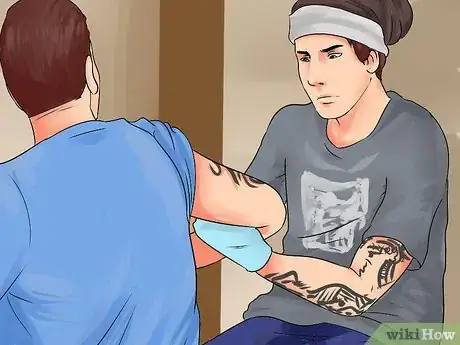

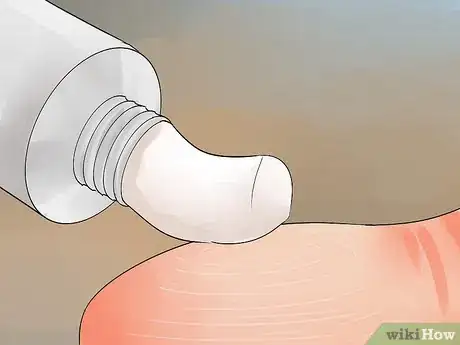
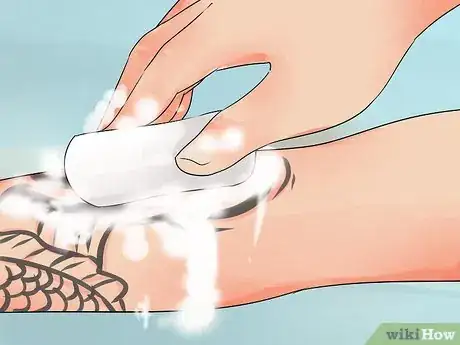
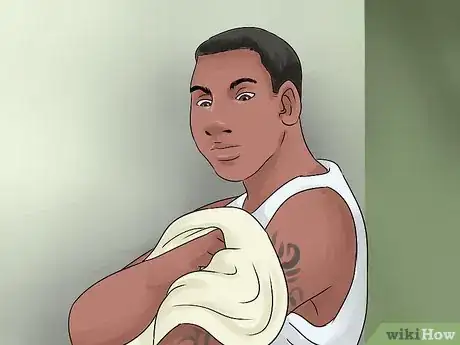

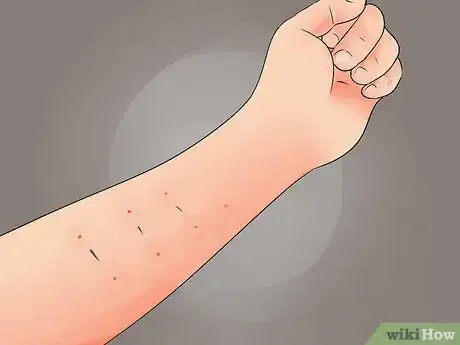
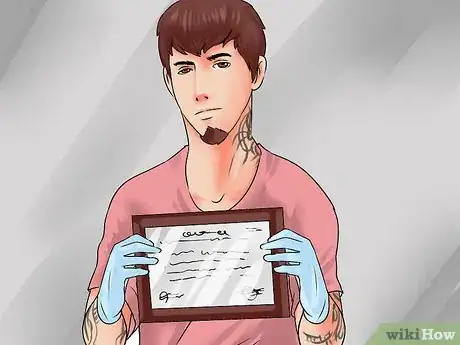
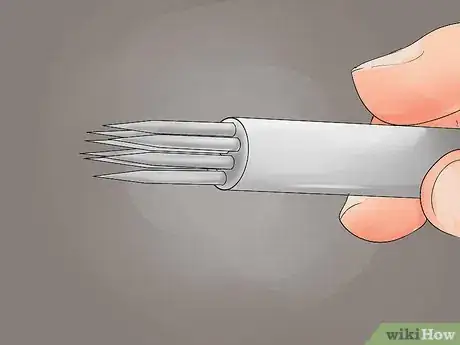


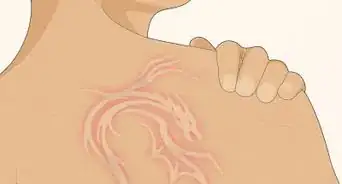


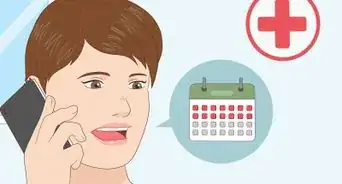



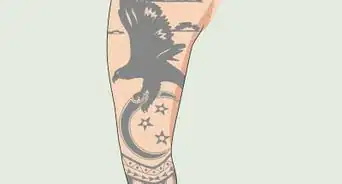
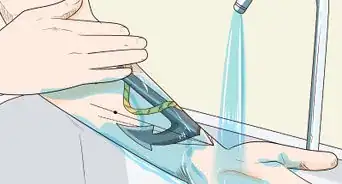
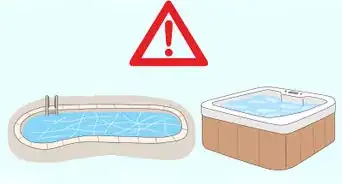
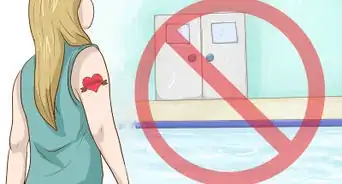


















































Medical Disclaimer
The content of this article is not intended to be a substitute for professional medical advice, examination, diagnosis, or treatment. You should always contact your doctor or other qualified healthcare professional before starting, changing, or stopping any kind of health treatment.
Read More...